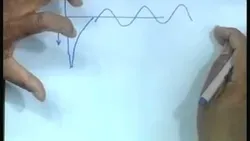
Wildfire Disaster Response 
This course provides an overview of the response to wildfire disasters. It covers topics such as firefighting techniques, evacuation procedures, and post-disaster recovery. It also examines the impact of wildfires on the environment and the communities affected. Students will gain an understanding of the challenges faced by emergency responders and the strategies used to mitigate the effects of wildfires. ▼
ADVERTISEMENT
Course Feature
![]() Cost:
Cost:
Free
![]() Provider:
Provider:
Futurelearn
![]() Certificate:
Certificate:
No Information
![]() Language:
Language:
English
![]() Start Date:
Start Date:
Self Paced
Course Overview
❗The content presented here is sourced directly from Futurelearn platform. For comprehensive course details, including enrollment information, simply click on the 'Go to class' link on our website.
Updated in [May 25th, 2023]
Wildfire Disaster Response is a course designed to provide students with an understanding of the causes and effects of wildfires, as well as the strategies and techniques used to respond to them. Through lectures, discussions, and hands-on activities, students will gain an understanding of the science behind wildfires, the roles of different agencies in responding to them, and the importance of community preparedness. The course will also cover the basics of fire suppression, fire safety, and post-fire recovery. By the end of the course, students will have a better understanding of the complexities of wildfire disasters and the strategies used to respond to them.
[Applications]
This course provides an overview of the challenges and strategies for responding to wildfire disasters. It covers topics such as fire safety, evacuation planning, and post-fire recovery. After completing this course, participants should be able to apply the knowledge and skills learned to their own wildfire disaster response plans. They should also be able to identify potential risks and develop strategies to mitigate them. Additionally, participants should be able to develop effective communication plans to ensure that all stakeholders are informed and prepared for a wildfire disaster.
[Career Paths]
1. Wildfire Disaster Response Coordinator: This job involves coordinating the response to wildfires, including assessing the damage, coordinating resources, and providing support to affected communities. This position is becoming increasingly important as the frequency and intensity of wildfires continues to increase.
2. Wildfire Mitigation Specialist: This job involves developing strategies to reduce the risk of wildfires, such as creating firebreaks, implementing prescribed burning, and educating the public about fire safety. This position is becoming increasingly important as the need to reduce the risk of wildfires grows.
3. Wildfire Restoration Specialist: This job involves restoring ecosystems and habitats that have been damaged by wildfires. This position is becoming increasingly important as the need to restore ecosystems and habitats grows.
4. Wildfire Research Scientist: This job involves researching the causes and effects of wildfires, as well as developing strategies to reduce the risk of wildfires. This position is becoming increasingly important as the need to understand and mitigate the effects of wildfires grows.
[Education Paths]
1. Fire Science Degree: Fire Science degrees provide students with the knowledge and skills needed to respond to and manage wildfires. This degree focuses on the science of fire, including fire behavior, fire suppression, and fire safety. It also covers topics such as fire ecology, fire management, and fire prevention. Developing trends in this field include the use of technology to better predict and respond to wildfires, as well as the development of new strategies for fire prevention and suppression.
2. Emergency Management Degree: Emergency Management degrees provide students with the knowledge and skills needed to respond to and manage disasters, including wildfires. This degree focuses on the management of disasters, including risk assessment, emergency planning, and disaster response. It also covers topics such as crisis communication, disaster recovery, and emergency preparedness. Developing trends in this field include the use of technology to better predict and respond to disasters, as well as the development of new strategies for emergency management.
3. Environmental Science Degree: Environmental Science degrees provide students with the knowledge and skills needed to understand and manage the environment, including the effects of wildfires. This degree focuses on the science of the environment, including ecology, conservation, and sustainability. It also covers topics such as climate change, environmental policy, and environmental law. Developing trends in this field include the use of technology to better understand and manage the environment, as well as the development of new strategies for environmental protection.
4. Forestry Degree: Forestry degrees provide students with the knowledge and skills needed to understand and manage forests, including the effects of wildfires. This degree focuses on the science of forestry, including forest ecology, forest management, and forest conservation. It also covers topics such as forest fire management, forest health, and forest restoration. Developing trends in this field include the use of technology to better understand and manage forests, as well as the development of new strategies for forest conservation.
Course Provider

Provider Futurelearn's Stats at AZClass
Discussion and Reviews
0.0 (Based on 0 reviews)
Explore Similar Online Courses

10-Day Hiragana Challenge

Learn Ethical Hacking : Beginner to Advanced!

Python for Informatics: Exploring Information

Social Network Analysis

Introduction to Systematic Review and Meta-Analysis

The Analytics Edge

DCO042 - Python For Informatics

Causal Diagrams: Draw Your Assumptions Before Your Conclusions

Whole genome sequencing of bacterial genomes - tools and applications

Advanced Erosion Control Measures

Environmental Studies


Start your review of Wildfire Disaster Response